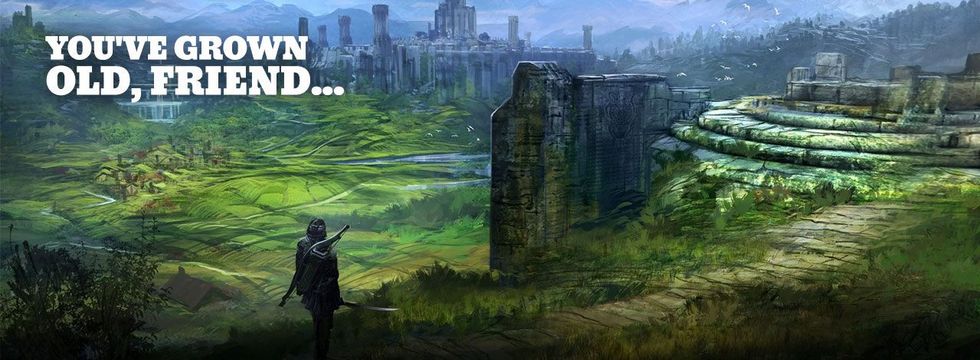
The Elder Scrolls IV: Oblivion Game revisiting
The Elder Scrolls: Oblivion – Once Slayer of PCs, Now Nearly Neglected
I have fond memories of Morrowind. I don't have too much memories with Skyrim, because I'm still playing it. And what about Oblivion? The fourth installment in the series seem the most forgotten, though it's certainly an important link.
The review is based on the PC version.
Oblivion had come to play a somewhat strange place in history – I would go as far as to say that it had bad luck. The fourth part of The Elder Scrolls series was a game that was ahead of its time. But when the time finally gained momentum and caught up with Oblivion, the game was already losing steam. And then it had a crisis, got taken over, and, eventually, left very few notable achievements that would deserve a place in video game history... But let's start at the beginning.
I'll never forget my first encounter with Oblivion. Not with the game itself, mind you, but its announcement in the press. The year was 2004 and the publication was an issue of a video-game related spin-off to a local IT magazine. One short paragraph and a single screenshot, not much bigger than a postage stamp – that was enough to make my heart go wild and captivate my imagination on the spot. I admit, the fact that I was just 11 at the time and spent every afternoon after school playing Morrowind may have played a role here.
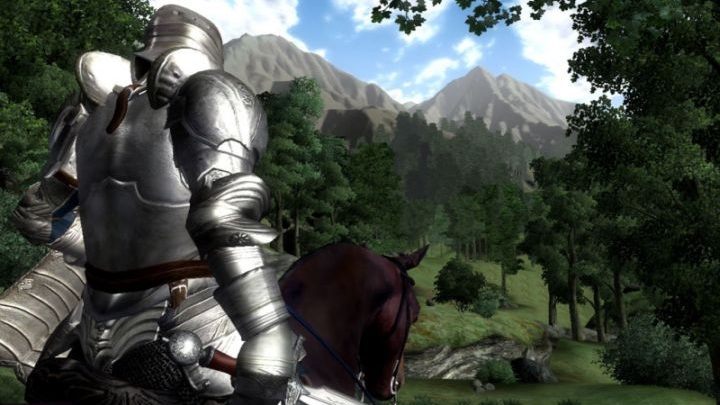
Cyberpunk-levels of hype
But truth be told, it wasn't just my imagination that was awakened at the time. At the time, Bethesda was considered one of the developers which are – would you believe this now? – driving the technological progress in the industry and setting new standards in graphics. Oblivion has definitely worked to maintain that reputation. The whole world was drooling over the preview screenshots and stared each subsequent new image to death. Never before have we seen such dense forests and equally sharp textures.
Before people started asking "Will it run Crysis?," the question was: "Will it run Oblivion?”. And in most cases, it wouldn't. At least not as it should have, though it usually started off promising. As long as we explored the jail during the prologue, performance remained at a decent level. But then came the ascent to the surface... and the whole world almost ground to a halt. If Oblivion appeared during Steam's time, many players would swear profoundly, realizing at that point that they already had more than two hours clocked in and could no longer request a refund.
Of course, in the end The Elder Scrolls IV didn't look as pretty as in the promo materials. This was a time, however, when people could somehow bear with downgrades without threatening to kill somebody. On the contrary, the more common response was a sigh of relief: "Phew, glad I don't have to modernize my PC after all. Maybe I can somehow get it to run at 20 fps. It'll be fine."
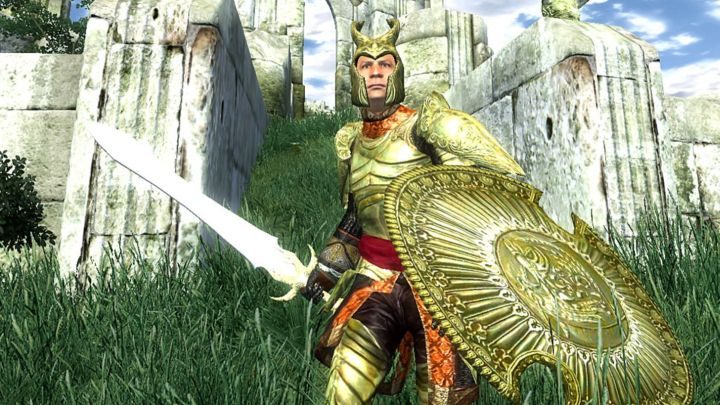
Artificial intelligence too intelligent for gamers?
But is graphics the only thing that Oblivion is worth to be remembered for? Definitely not. The first decade of the 21st century was still the beautiful period of time when more programmers were employed to develop video games than animators, and developers used to compete in delivering technological innovations. In 2004, Half-Life 2 brought the world to its knees with physics simulation. Oblivion wanted to do the same with artificial intelligence.
Our eyes were sparkling when Todd Howard – still a respected visionary at the time and not a hero of mocking memes – talked about the Radiant AI system. About NPCs leading their own lives full-time, guided by individually defined needs or other motivations, and about quest givers who have to be chased around the woods because they are busy and don't have the time to stand like a peg around the clock, waiting for a willing adventurer.
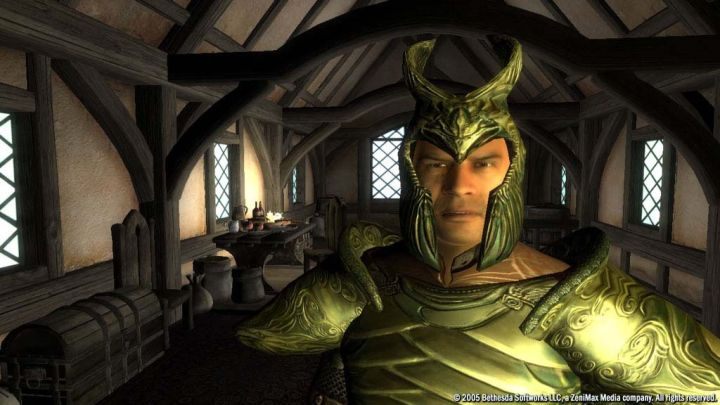
In the end, Bethesda got scared of the monster it had created, and the final build of Radiant AI also came out a little less impressive than predicted (yet still a breakthrough). The developers did not want players to be deterred by the unpredictability of NPCs. For example, so that they wouldn't come across an impossible quest, because the dealer who possessed key information got shanked in a back alley by local junkies a few days earlier. Sounds reasonable, I'll give them that. But a decade and a half later, as the growing computing power of PC and consoles is being pumped into handling things like ray tracing, while the development of physics and AI has been stuck in place, Bethesda would really do us all a big favor by resuming the development of Radiant AI.
Ancestor of modern Assassin's Creed (?!)
That's cool and all, someone would say, but can we talk about something other than technology in Oblivion? Sure thing. Like gameplay, for example. The Elder Scrolls IV is one of those games that began the process of proceeding merging of RPGs and action games – the same process that led Ubisoft to turning the Assassin's Creed series into a pseudo-RPG a decade later, under the influence of The Witcher 3.
Although Morrowind is only four years older, its reception was vastly differently. Its obvious imperfections and half-measures in mechanics – such as a primitive combat or very, er... modest animations – were all shrugged off. It's an RPG, they said, other things matter here. But at the dawn of the 21st century – quite unlike today – four years were more like four eras. And four eras later, the philosophy of developing cRPGs was vastly different as well.
Feeling the need to fulfill its historical mission, Bethesda decided to design gameplay mechanics without any excuses. First example, melee combat, which, with a wider range of attacks and active blocking, came closer to what we know from FPS hack'n'slash games. Heck, we even got dodge rolls. Player imagination was particularly stirred by reports of next-level stealth mechanics – one of the designers of The Thief series was recruited to develop it. Of course, by modern standards the whole thing is outdated as heck. At the time, however, the Earth was trembling from dropping jaws – it was not believed that all this was possible in a big, open-world RPG.
Which reminds me... The open world. Everyone's hearts raced at the thought of a map that would be not only gigantic, but also beautiful. All these cities, inhabited by life-like NPCs! All these woods, thick as never before! All these dungeons, much more vast than they used to be and infested with moving physics-based traps! All those houses that you can buy and furnish yourself! At the time, the atmosphere was slowly heading to the background, and visuals came to the fore... And that's why Oblivion ages so badly.
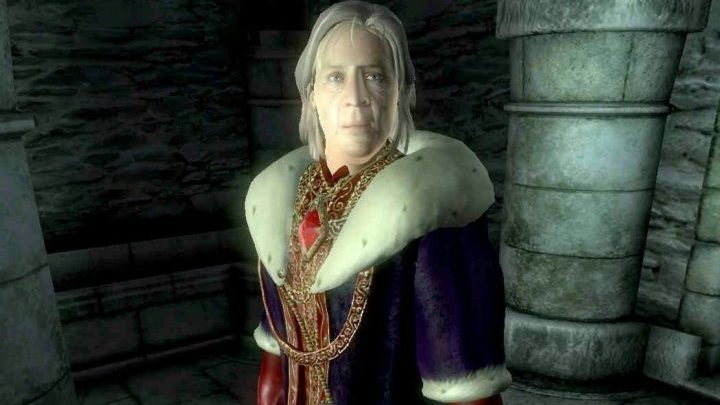
The four misfortunes of the fourth TES
What's our first thought today when we remember The Elder Scrolls IV? Horse armor. An unnaturally shiny barding on an unnaturally polished horseback that stands on unnaturally lush grass, in front of a stable built of highly lustrous stone. Yes, Cyrodiil presented itself like pure fantasy. And well-nourished fantasy at that.
Think of the Dunmers in Morrowind – gloomy, snarly, endowed by nature with concave and angular faces. And now for the same race in Oblivion –chubby, smiled faces and a suspiciously warm voice (probably the same for all Dark Elves across the province). In turn, the Argonians and the Khajiit underwent rapid evolution, and the representatives of these races developed fully upright silhouettes – they've lost much of their animalistic features that distinguished them in Vvardenfell. Good thing they retained their tails at least.
And Cyrodiil itself? What was the atmosphere like here? It's hard to pinpoint it... because it wasn't very distinctive. Just your average magical Middle Ages with chromed armor, goblins, trolls and ever-present bandits coming out of the bushwork, trying to rob character clearly more deadly then there are. Typical fantasy cliché with only occasional Tamriel accents sticking out here and there (e.g. the Daedra). It is no wonder that today we have fonder memories of the inhospitable and quirky, but at the same time more diverse, Vvardenfell, or even the distinctly "viking" Skyrim.
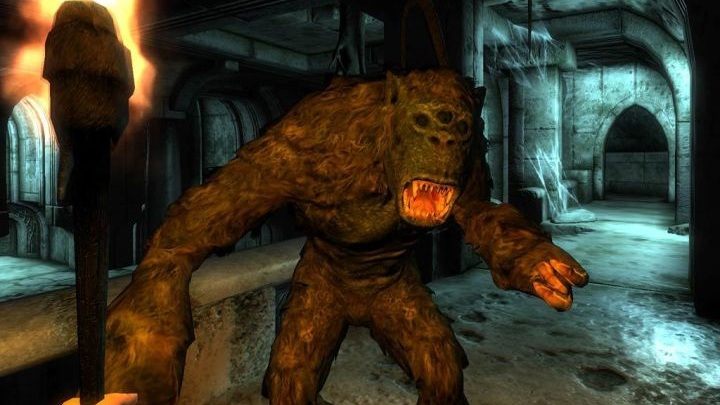
Other aspects also do not help Oblivion in becoming a fondly remembered title. Many people still remember the bad aftertaste of the aforementioned horse armor – it has become a symbol of the new distribution model of extras, i.e. mundane packs of downloadable content (DLC) that were intended to take the place of traditional expansions as we knew them. The Elder Scrolls IV also comes to mind very quickly when citing examples of poorly applied level scaling. You who reached level 20 or so and started encounter forest bandits clad in precious mithril or glass armor know all too well what I'm talking about.
Of course, fans quickly made a contest of fixing Oblivion's mechanical and technical shortcomings. And that's the main reason – even more important than the maximum scores given by reviewers – why we still remember this game. Not all modders have switched to Skyrim and we can still enjoy regular releases of new items, locations or even entire campaigns in The Elder Scrolls IV. There's no shortage of visual mods, including full makeovers. Among the latter, the Skyblivion project, which reconstructs Oblivion on Skyrim's engine, deserves special mention.
Forgotten, but unforgettable
Well then, how should I summarize this argument... About two years ago, I tried to go back to Oblivion to finally get acquainted with the Shivering Isles expansion (let's just say I'm a fan of Lord Sheogorath). Unfortunately, I was at least half a decade late. Maybe my experience could have been salvaged if I had slapped a handful or two of mods on it, especially visual mods... But I didn't care enough. I nodded my head in appreciation at the ingenuity of the people who designed the Shivering Islands, and then I shut down the game to never return to it again.
That said, The Elder Scrolls IV still remains on the hard drive of my PC. Since 2006, I've switched hardware numerous times and data migrated from one HDD to another, and somehow Oblivionhas always survived the moving. And I think it will stay that way. I remember no more than a handful of games in which I may have spent more time than in this one – with an emphasis on "may have" Even if I wasted most of those hundreds of hours – as we usually do when we are young – I still have a strong fondness for Oblivion from that period. And I suspect it will follow me to the grave.
Christopher Mysiak | Gamepressure.com

Christopher Mysiak
Associated with GRYOnline.pl since 2013, first as a co-worker, and since 2017 - a member of the Editorial team. Currently the head of the Game Encyclopedia. His older brother - a game collector and player - sparked his interest in electronic entertainment. He got an education as a librarian/infobroker - but he did not follow in the footsteps of Deckard Cain or the Shadow Broker. Before he moved from Krakow to Poznan in 2020, he was remembered for attending Tolkien conventions, owning a Subaru Impreza, and swinging a sword in the company's parking lot.
more
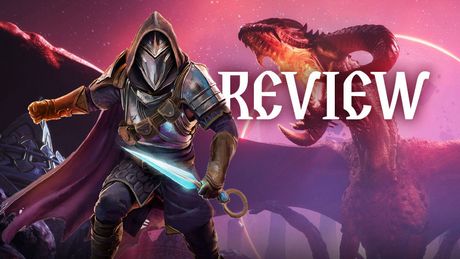
Dragon Age: The Veilguard Review: A New Entry That Could Bring More to the Table
game review
Dragon Age: The Veil Guard follows a path that moves away from the fans of the first installment of the series. It has added more simplifications, and the game world has been completely stripped of its former, dark character.
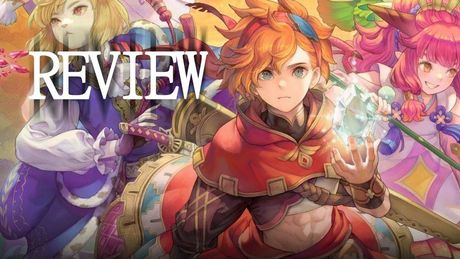
Visions of Mana Review: A Sacrifice for Nostalgia
game review
17 years after the release of the last Mana series game, Visions of Mana hopes to breathe new life into the series. Does it have what it takes to restore the balance of story and combat?
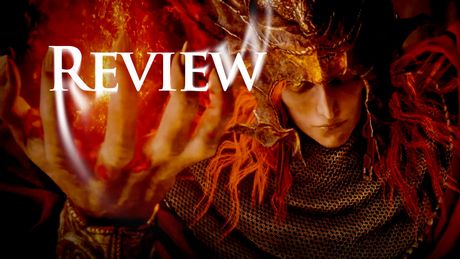
Elden Ring: Shadow of the Erdtree Review - Gem Hidden Under the Veil
game review
The Shadow of the Erdtree expansion is an awesome complement to the Elden Ring. FromSoftware did it again and provided us with a DLC of the highest possible level.